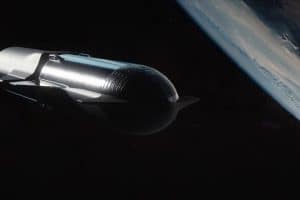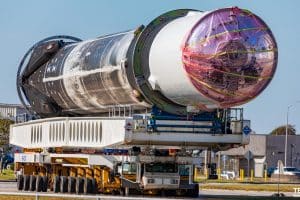Key Points
- 🚀 Another Falcon 9 joined the 16 launch club, launching from Space Launch Complex 40 at Cape Canaveral Space Force Station.
- 🎯 Falcon 9 B1060 successfully landed on the droneship ‘A Shortfall of Gravitas’ and will undergo refurbishment for its 17th flight, possibly for another Starlink mission.
- 🛰️ The Starlink mission deployed 54 satellites into a 43-degree orbital inclination.
- 📈 B1060 has launched a total of 809 payloads to orbit.
- 🌐 Future Starlink missions will use the Gen-2 mini-satellites, which offer four times the bandwidth compared to Version 1.5 satellites.
- 🚀 This was SpaceX’s 45th Falcon 9 launch of the year, on track to surpass their record from the previous year.
- 📆 SpaceX launched the Starlink 5-15 mission on July 15th.
- 🛠️ The payload fairings used on this mission were on their 9th and 10th flights, with recovery yet to be confirmed.
- 📊 SpaceX has launched a total of 4,822 Starlink satellites, with 3,734 in their operational orbit.
- 🌍 The Falcon 9 launch occurred at 11:50 p.m. ET (03:50 UTC) on July 15th.
Launching at 11:50 p.m. ET (03:50 UTC) on July 15th, another Falcon 9 joined the 16 launch club. The launch took place from Space Launch Complex 40 at Cape Canaveral Space Force Station.
Just days after the Falcon 9 B1058 broke the launch record, B1060 launched for the 16th time and successfully landed on the droneship ‘A Shortfall of Gravitas’ and will be brought back to Port Canaveral for refurbishment before its 17th flight in the coming months, which will most likely be another Starlink mission.
This launch was originally meant to occur on July 14th, but a hold was called 45 seconds before liftoff due to elevated oxygen levels on one of the first-stage engines, according to the webcast, SpaceX then preceded to conduct a static fire test the next evening, and after analyzing the data pushed ahead with the launch on Saturday night.
This Starlink mission sent the 54 Starlink satellites into a 43-degree orbital inclination after launching South East from Florida’s Space Coast. Including these 54 satellites, B1060 has launched a total of 809 payloads to orbit.
SpaceX tends to use its veteran rockets for Starlink missions as they test the limits of reusability and pose no risk to paying customers, however, it is probably a matter of time till we see a commercial payload on a Falcon 9 that has launched more than 15 times.
The payload fairings that flew on this mission were on their 9th and 10th flights, respectively, and SpaceX attempted recovery. However, we don’t find out if it was successful until the recovery ship returns to port.
The Starlink 5-15 mission was the last planned launch of the Version 1.5 satellite. Going forward, future Starlink missions will be the Gen-2 mini-satellites which can handle 4 times the bandwidth. They are larger than the V-1.5 satellites by about 500 kg and average 22 launched at once vs low to mid-50s for the V-1.5 Starlinks.
SpaceX has now launched 4.822 Starlink satellites to orbit, of which 3,734 are in their operational orbit, according to Jonathan McDowells Starlink tracker.
As for SpaceX as a whole, this was their 45th Falcon 9 of the year, 47th total overall, well on pace to break their record set last year.






